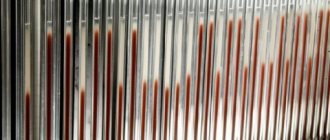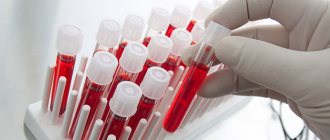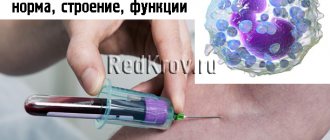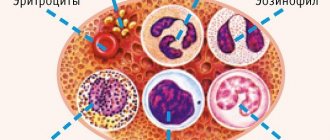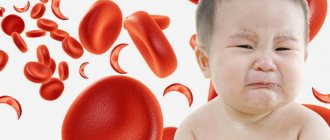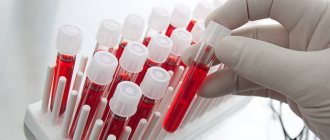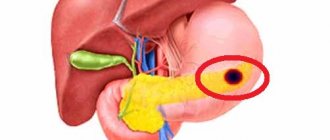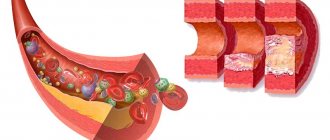One of the important parts of the human body's immune system are cells that produce antibodies and destroy foreign and abnormal cells called lymphocytes. In the blood, the norm of these cells corresponds to the strict indicators of the leukocyte formula. Only a doctor can explain why lymphocytes are elevated in the blood of men based on a set of examinations. A single formula used in medical practice will tell you how many lymphocytes a healthy person should have in the blood.
Normally, lymphocyte counts in men do not exceed 1.2 – 3.0 thousand/ml. In some cases, it is allowed to increase the rate to 4.5 thousand/ml, but not higher. These numbers are indicated on the general blood test form.
Type of lymphocyte
Lymphocytes are present in the following forms:
- Lymphoblastomas, called large cells. Their task is to attack tumor cells and foreign cells that cause infection.
- Small lymphocytes produced by immunoglobulins. They have the property of protecting the body from all kinds of infectious diseases.
- B lymphocytes produce antibodies when they bind to foreign cells.
- T-lymphocytes, consisting of 3 types: T-killers, T-suppressors, T-helpers.
A blood test performed by clinic laboratory assistants allows you to recreate a picture of the general condition of the body.
If, during the analysis, lymphocytes in the blood of men are slightly elevated, then there is no need to worry. However, if there is a noticeable increase, this is a reason to meet with a doctor. Exceeding the permissible norm of lymphocytes in the blood is called lymphocytosis in medicine. There are two types: absolute and relative. In absolute cases, an increase in the number of immune cells is observed in relation to other components. When relative, the level fluctuates slightly.
An increase in lymphocytes in the blood of men can be influenced by both mild viral infections and serious pathological conditions.
Normally, lymphocyte counts in men are usually more stable than in women. It should be noted that they change with increasing age. The norm of lymphocytes in the blood of men of retirement age approaches the lower limit, and in women it is the opposite.
Decoding the results
The test results are entered into a form and sent to the patient by e-mail or printed on a special form and handed over to the patient.
The content of lymphocytes in the blood is displayed as a percentage of leukocytes, using the “%” icon. The table above shows the norms of lymphocyte content for children and adults, depending on age and gender. If you wish, you can find out the number of lymphocytes yourself: the norm of lymphocytes is 20-40% of the total number of all leukocytes.
Leukocytes are reported as an absolute number per liter of blood, Nx10 9, (the number 10 to the 9th power) and are labeled with the abbreviation LYM. You should multiply this number by a percentage.
Types of lymphocytosis
An increased level of lymphocytes indicates the body's reaction to an external or internal stimulus.
There are two types of lymphocytosis:
- Reactive – in the form of an immune response to infectious inflammation. Once the cause is eliminated, a satisfactory condition is observed within 6 to 8 weeks.
- Malignant – considered as an independent oncological disease (for example, leukemia).
It is not always possible to determine the correct form, especially at an early stage of the disease. In such cases, additional examination is carried out using ultrasound examination of the bone marrow, testing at the molecular genetic level, and identifying abnormal chromosome development.
What are T lymphocytes and where are they produced?
Agranulocyte precursors appear in the bone marrow. The maturation process occurs in the thymus gland. Certain hormones and tissues at the final stage of maturation influence the differentiation of lymphocytes. Each type of T cell is structurally and functionally different from each other. Lymphocytes are produced in the bone marrow and in small quantities in the spleen and lymph nodes. In case of disturbances in the functioning of the bone marrow or leukemia of various etiologies, the lymph nodes become enlarged, which is the first sign of pathological conditions.
T cells can be distinguished from other lymphocytes by the presence of a special receptor on the membrane. Most T lymphocytes carry a cell receptor on their membrane consisting of alpha and beta chains. Such lymphocytes are commonly called alpha-β-T cells. They are part of the acquired immune system. Specialized gamma delta T cells (a less common type of T cell in humans) have invariant T cell receptors with limited diversity.
The main reasons for increased lymphocyte levels
Among the factors that provoke exceeding the permissible norm are:
- viral infections (rubella, measles, chickenpox, enteroviruses, cytomegalovirus and others);
- infectious mononucleosis;
- bacterial infections (whooping cough, brucellosis, syphilis and others);
- infection with Mycobacterium tuberculosis;
- protozoal infections (toxoplasmosis);
- helminthic infestations (pinworms, roundworms and others).
In addition to infection, excess of the norm is observed in cases of hypersensitivity reactions:
- caused by taking medications;
- in the presence of serum sickness;
- due to injuries received.
When the body is under stress, an increased level of lymphocytes in men is also noted. This condition is called stress lymphocytosis.
It affects men who smoke for a long period. A similar condition is also observed during organ resection (spleen, gall bladder). The stress factor is also observed during granular changes.
Rheumatoid arthritis is a type of autoimmune disease that causes an increase in lymphocytes in the blood in men.
The norm of lymphocytes in men is disrupted due to endocrine diseases (diabetes mellitus, hyperthyroidism).
Tumors and the conditions that precede them significantly influence changes in the number of immune defense cells.
An increase in lymphocytes in the blood of men is promoted by malignant thymoma, as well as lymphoproliferative disease.
Violation of the norm of lymphocytes in men is observed in lymphocytic leukemia in the chronic stage, in the acute stage of malignant non-Hodgkin's lymphoma. Thymic hyperplasia, an increase in the level of hormones secreted by the thyroid gland, is a common cause of increased levels.
Why are lymphocytes low?
Indications for the study
Donating venous and capillary blood shows the changes that occur in the body.
A study of lymphocyte levels in adults is carried out as a result of:
- a previous infectious disease of long duration;
- tendency to severe allergies to medications or infections;
- symptoms of insufficient body resistance have appeared;
- available data on the formation of tumors of different localizations;
- undergone severe surgical interventions;
- upcoming preparation for surgery;
- long period of taking medications;
- pregnancy (especially important, since during this period immune reactions occur in the body of women).
Indications for research in children:
- preventive examination - once a year;
- examination of chronically ill children - several times a year depending on the diagnosis;
- prolonged treatment of a simple disease;
- health complaints without specific symptoms;
- complications of childhood diseases;
- effectiveness of medications in treating a child.
A hematologist conducts an examination based on the results of completed tests, which serve as the basis for further treatment.
Symptoms of lymphocytosis
The most common symptoms observed with an increase in lymphocytes include:
- general malaise;
- headaches of unknown etiology;
- increased body temperature;
- possible rashes;
- weight loss;
- excessive sweating;
- decreased hemoglobin levels;
- enlarged and painful lymph nodes.
The listed symptoms are often similar to common viral and bacterial infections, but this fact should not be ignored. Self-palpation of inflamed areas of the body, carried out at home, requires subsequent consultation with a specialist.
Lymphocytosis can leave consequences in the body, manifested in a general disruption of the immune and endocrine systems.
Functions
Basic functions of lymphocytes
The main functions of lymphocytes include:
- Antibody synthesis,
- Recognition of foreign agents and their subsequent destruction,
- Elimination of own cells that are defective or mutants,
- Implementation of immune memory - cells remember a number of agents and do not allow them to develop. Vaccinations are based on this principle.
Lymphocytes contribute to transplant rejection, which does not play the best role in the body. Another function that does not always help a person is increasing sensitivity to foreign agents.
What to do if the analysis shows an increased level of lymphocytes
The results of clinical tests do not always make it possible to evaluate pathology on a large scale. You can get a more accurate analysis using ultrasound examination of internal organs or computed tomography, punctures, chest x-rays, and rectal examinations.
Data from a cytological (histological) examination of the material will help confirm or refute the assumption, because the maximum content of lymphocytes (up to 98%) is observed in tissues.
Changes in the form of enlarged lymph nodes, liver, and spleen are a real reason to contact specialists. You can consult an oncologist or hematologist. A highly specialized specialist, based on work experience and indicators of a comprehensive examination, will explain the reasons for deviations from the norm of lymphocytes in the blood.
Any operation in the body affects the rate of lymphocytes in the blood of men. The process itself is not scary. However, there are factors that interfere with the restorative properties. These include unbalanced nutrition in the form of fasting and strict diets. In this case, the body is weakened.
If dietary errors are not corrected, then immunity will need to be restored with medication (prescription of immunomodulators and immunostimulants of plant and synthetic origin).
Before conducting the analysis, you should prepare in advance for the blood sampling process. It is necessary to refuse any medical manipulations, limit physical activity, and eliminate stress. Blood for collection is taken in the morning on an empty stomach (the last meal with an 8-hour interval). Excitement and anxiety, sudden changes in body position negatively affect the result of the analysis. If during this period the man took any medications, this should be reported to the doctor.
The test results are sometimes influenced by the human factor (errors in the work of the laboratory assistant). Therefore, in doubtful cases, it is better to repeat the analysis.
The norm of lymphocytes in a blood test in men can be confirmed within one month as they recover. This fact most likely indicates an inflammatory process that existed in the past, after which the body recovered on its own. In any case, you should not escalate the situation, but carry out a full diagnosis in a complex of examinations.
A healthy lifestyle, physical activity, proper rest, lack of stress, a balanced diet, devoid of foods containing carcinogens, fully accompanies the normal functioning of the body. Any deviation from the norm, if not correctable, makes it possible to eliminate the cause of the pathology in most cases.
What are lymphocytes responsible for in the human body?
To understand what lymphocytes in the blood are responsible for, it is necessary to consider the functions of these blood cells. Blood cells signal the state of the immune system and are primarily responsible for fighting foreign elements that have entered the body. You can also read what eosinophils and segmented neutrophils are on the website.
At the same time, protective cells fight equally well against viruses and bacteria, fungi and other organisms. Foreign cells include malignant and aged cells that do not fulfill their purpose in the body. The work of blood cells in the body has clearly defined stages, for which various types of lymphocytes are responsible:
- providing cellular immunity;
- regulation of hematopoiesis;
- release of cytokines;
- regulation of humoral immunity.
T helper cells
About half of the T lymphocytes have the CD4 antigen, that is, they are T helper cells.
These are assistants that stimulate the process of secretion of antibodies by B-lymphocytes, stimulate the work of monocytes, mast cells and T-killer precursors to “include” in the immune response. For reference.
The function of helpers is carried out through the synthesis of cytokines (information molecules that regulate the interaction between cells).
Depending on the cytokine produced, they are divided into:
- Class 1 T helper cells (produce interleukin-2 and interferon gamma, providing a humoral immune response to viruses, bacteria, tumors and transplants).
- T-helper cells of the 2nd class (secrete interleukins-4, -5, -10, -13 and are responsible for the formation of IgE, as well as the immune response aimed at extracellular bacteria).
T-helper types 1 and 2 always interact antagonistically, that is, increased activity of the first type inhibits the function of the second type and vice versa.
The work of helpers ensures interaction between all immune cells, determining which type of immune response will predominate (cellular or humoral).
Important.
Disruption of the work of helper cells, namely the insufficiency of their function, is observed in patients with acquired immunodeficiency. Helper T cells are the main target of HIV. As a result of their death, the body's immune response to stimulation of antigens is disrupted, which leads to the development of severe infections, the growth of oncological tumors and death.
These are the so-called T-effectors (cytotoxic cells) or killer cells. This name is due to their ability to destroy target cells. By performing lysis (lysis (from the Greek λύσις - division) - dissolution of cells and their systems) of targets carrying a foreign antigen or mutated autoantigen (transplants, tumor cells), they provide antitumor defense reactions, transplantation and antiviral immunity, as well as autoimmune reactions.
Killer T cells, using their own MHC molecules, recognize a foreign antigen. By binding to it on the cell surface, they produce perforin (cytotoxic protein).
After lysing the “aggressor” cell, killer T cells remain viable and continue to circulate in the blood, destroying foreign antigens.
T-killers make up up to 25 percent of all T-lymphocytes.
For reference.
In addition to providing normal immune responses, T-effectors can participate in antibody-dependent cellular cytotoxicity reactions, contributing to the development of type 2 hypersensitivity (cytotoxic).
This can manifest itself as drug allergies and various autoimmune diseases (systemic connective tissue diseases, autoimmune hemolytic anemia, myasthenia gravis, autoimmune thyroiditis, etc.).
Some drugs that can trigger the process of tumor cell necrosis have a similar mechanism of action.
Important.
Drugs with cytotoxic effects are used in chemotherapy for cancer.
For example, such medications include Chlorbutin. This remedy is used to treat chronic lymphocytic leukemia, lymphogranulomatosis and ovarian cancer.
Norm
Normal values for the number of these cells in the blood will change with age - this is normal and is not considered a pathology. Until the age of six, lymphocytes will predominate in the blood, and then the function of these cells will mostly be performed by neutrophils. The decrease in the number of cells with age is due to a decrease in the size of the thymus gland, where T-lymphocytes develop and differentiate.
The norm will be the following indicators of T cells from the total number of lymphocytes by age group:
- newborns - 12–36%;
- first month - 40–76%;
- up to six months - 42–74%;
- up to a year - 38–72%;
- up to 12 years - 24–54%;
- 13-15 years old - 22–50%;
- after 16 years and throughout life - 19–37%.
A slight deviation in the indicators is not considered a pathology. Large discrepancies with the normal parameter will clearly indicate the development of a pathological process in the body. In this case, a repeat analysis is prescribed (to eliminate the possibility of error) and a comprehensive examination (to determine the cause of the development of the anomaly and prescribe the correct treatment).
